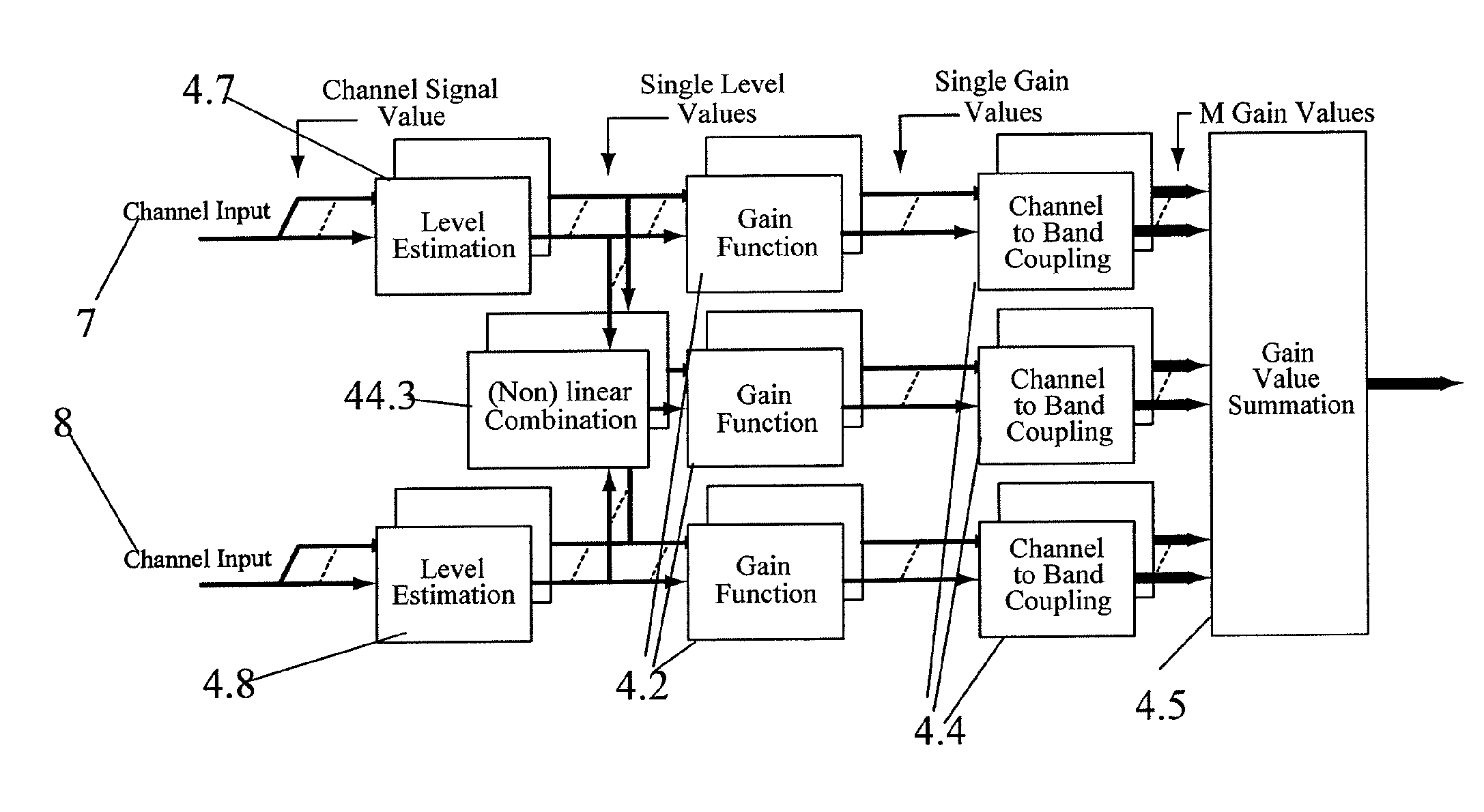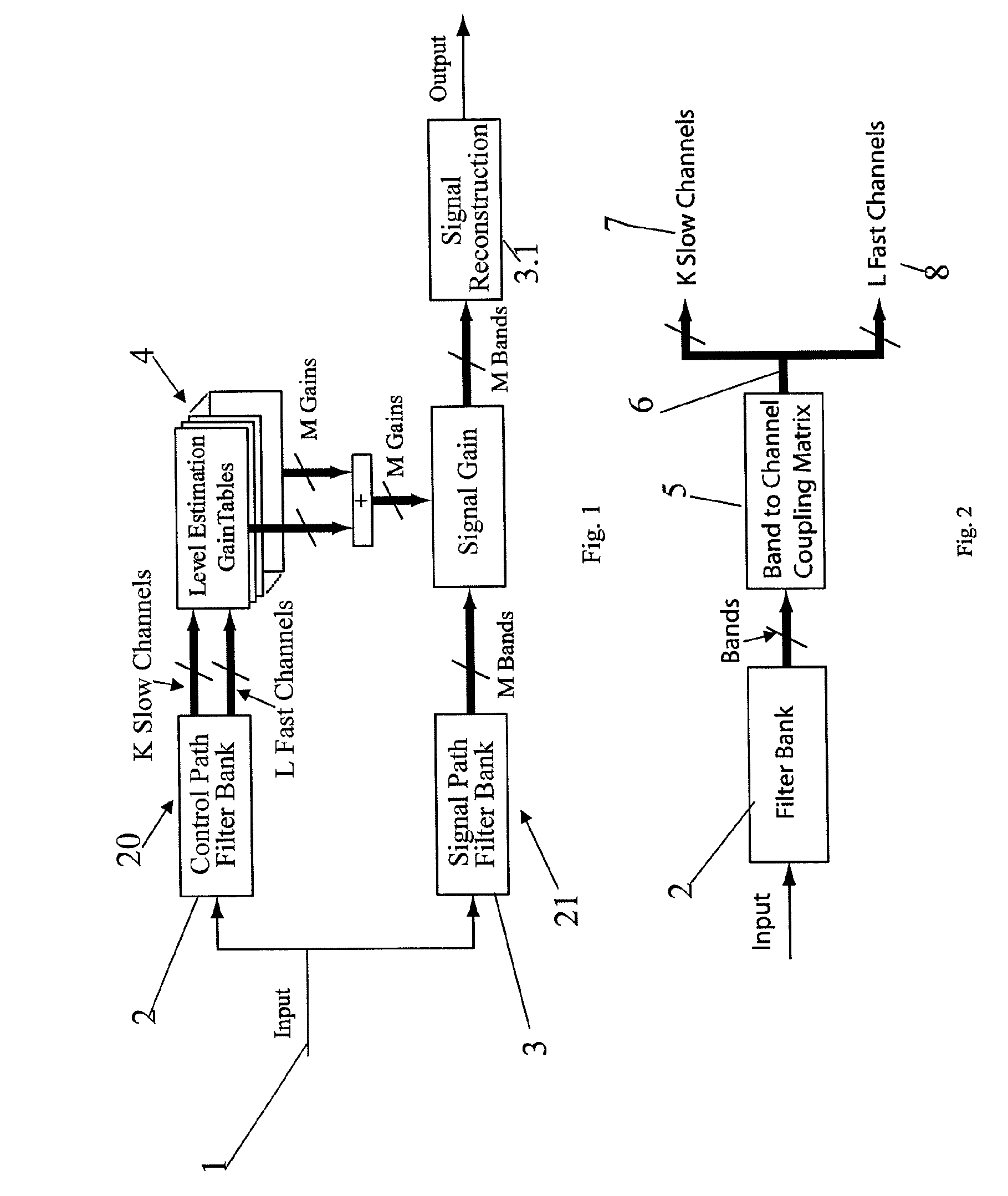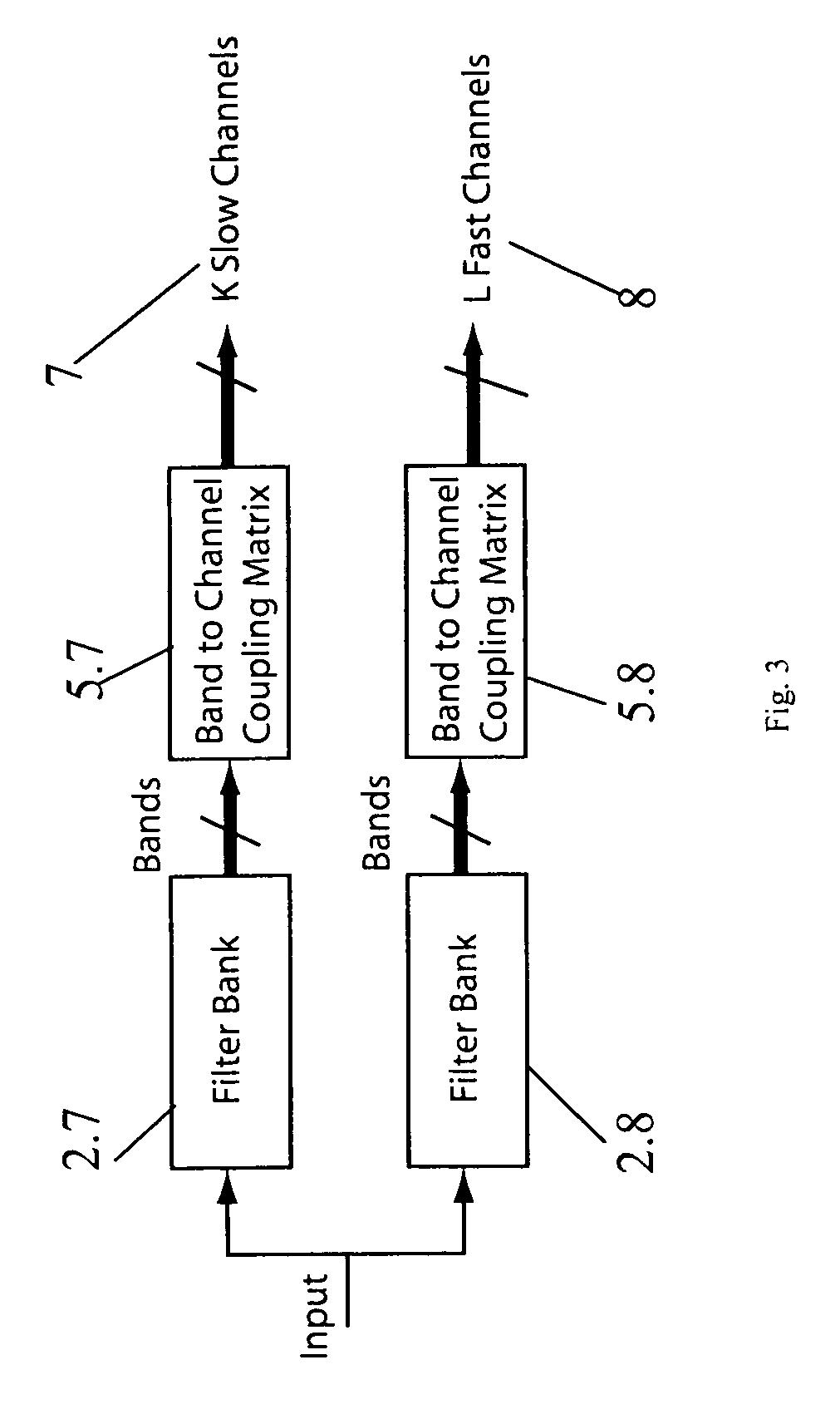Hearing aid
a technology of hearing aids and amplification devices, applied in the field of hearing aids, can solve the problems of reducing the useful input dynamic range, reducing the temporal contrast, and reducing the compression distortion—poor sound quality, and achieve the effect of fast attack times
- Summary
- Abstract
- Description
- Claims
- Application Information
AI Technical Summary
Benefits of technology
Problems solved by technology
Method used
Image
Examples
Embodiment Construction
[0062]A system overview is given in FIGS. 1 and 13. The input signal 1 is provided from one or more microphones 11 as shown in FIG. 13. The signal processor 12 comprises a control path 20 and a signal path 21. As seen in FIG. 1 the control path 20 comprise level estimators 4 working in a number of channels each comprising one or more frequency bands, and the provided levels are used to calculate the desired gain in each channel. In the hearing aid processor of FIG. 1 there are K so called Slow Channels and L so called Fast Channels whereby the fast and slow refers to the time constants employed by the level estimators of the respective channels. The gains are translated into filter coefficients which are served at a filter in the signal path 21 in order to provide the frequency shaped output to aid the user in overcoming his hearing disorder. The blocks Control Path Filter Bank 2 and Level Estimation Gain Tables 4 in FIG. 1 are described in more detail with reference to FIGS. 2 and ...
PUM
 Login to View More
Login to View More Abstract
Description
Claims
Application Information
 Login to View More
Login to View More - R&D
- Intellectual Property
- Life Sciences
- Materials
- Tech Scout
- Unparalleled Data Quality
- Higher Quality Content
- 60% Fewer Hallucinations
Browse by: Latest US Patents, China's latest patents, Technical Efficacy Thesaurus, Application Domain, Technology Topic, Popular Technical Reports.
© 2025 PatSnap. All rights reserved.Legal|Privacy policy|Modern Slavery Act Transparency Statement|Sitemap|About US| Contact US: help@patsnap.com



